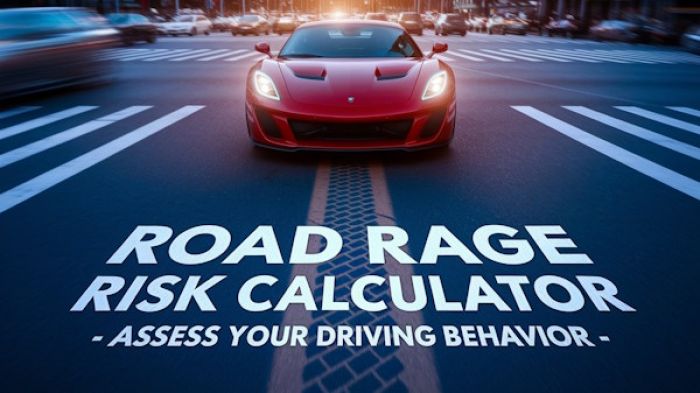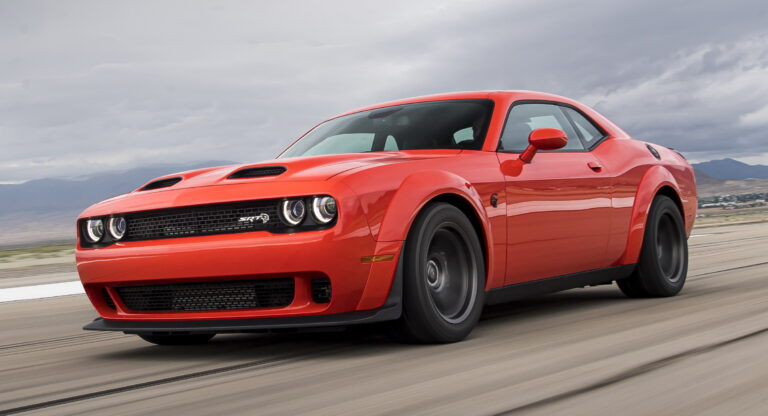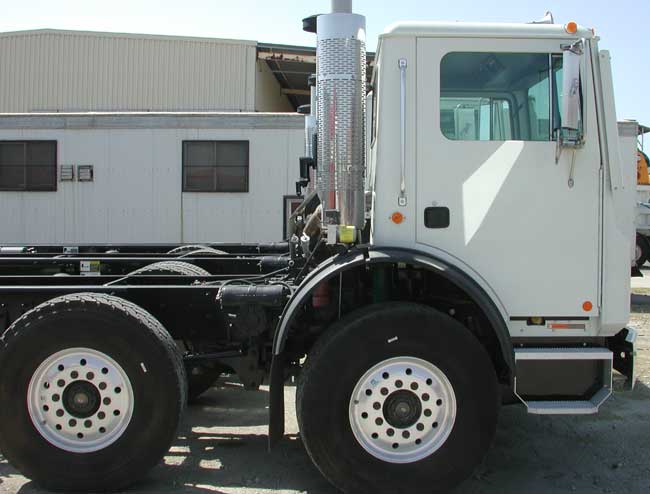Brand New Car Battery Price: A Comprehensive Guide to Understanding and Navigating the Market
Brand New Car Battery Price: A Comprehensive Guide to Understanding and Navigating the Market cars.truckstrend.com
A car battery is the silent hero under your hood, providing the essential surge of electricity needed to start your engine and power your vehicle’s complex electrical systems. When it fails, usually without much warning, it can bring your day to a grinding halt. Understanding the brand new car battery price, what influences it, and where to find the best value is crucial for any vehicle owner. This comprehensive guide will demystify the costs associated with car batteries, helping you make an informed decision when it’s time for a replacement.
The Heart of Your Vehicle: Understanding Car Battery Importance and Price Dynamics
Brand New Car Battery Price: A Comprehensive Guide to Understanding and Navigating the Market
At its core, a car battery is a rechargeable electrochemical device that stores energy and converts it into electrical current to crank the engine, illuminate lights, operate the radio, and run countless other electronic components. Over time, due to age, extreme temperatures, or frequent short trips, its ability to hold a charge diminishes, necessitating a replacement.
The price of a brand new car battery is not a fixed figure. It’s a dynamic range influenced by a multitude of factors, from the battery’s chemical composition and performance specifications to the brand, warranty, and even where you purchase it. Navigating this landscape effectively can save you significant money and ensure you get the right battery for your vehicle’s specific needs, ensuring reliable starts and consistent performance.
What Influences Brand New Car Battery Price?
The cost of a new car battery is a reflection of its technology, capacity, durability, and the value proposition offered by different brands and retailers. Understanding these influencing factors is the first step toward smart purchasing.
1. Battery Type and Technology
The most significant factor influencing price is the battery’s underlying technology:
- Conventional Lead-Acid (SLA/Flooded): These are the most common and oldest type, characterized by liquid electrolyte. They are the most affordable but require occasional maintenance (checking water levels in some models) and are more susceptible to vibration and temperature extremes.

- Price Range: $80 – $150
- Enhanced Flooded Battery (EFB): A step up from conventional, EFBs are designed for vehicles with basic start-stop systems. They offer better charge acceptance and cycle life than standard flooded batteries but are less robust than AGM.
- Price Range: $120 – $200

- Absorbed Glass Mat (AGM): AGM batteries use a special glass mat to absorb the electrolyte, making them spill-proof, vibration-resistant, and capable of deep cycling. They are ideal for modern vehicles with advanced electronics, start-stop technology, or high power demands. They also recharge faster and have a longer lifespan.
- Price Range: $180 – $300+

- Lithium-ion (Li-ion): While primarily used in electric vehicles, specialized Li-ion starter batteries are emerging for high-performance or luxury cars. They are incredibly lightweight, offer superior power density, and a very long cycle life, but come with a premium price tag.
- Price Range: $500 – $1000+ (and often more for OEM replacements)
2. Battery Size and Group Size
Batteries come in various physical dimensions and terminal configurations, categorized by BCI (Battery Council International) group sizes (e.g., Group 24, 34, 65, 78). Your car’s manufacturer specifies the correct group size for optimal fit and performance. Larger batteries or less common group sizes can sometimes be more expensive.
3. Cold Cranking Amps (CCA)
CCA is a critical rating that indicates the battery’s ability to start an engine in cold temperatures. A higher CCA rating means more starting power, which is essential in colder climates. Generally, batteries with higher CCA ratings are more expensive due to their robust internal construction.
4. Reserve Capacity (RC)
RC measures how long a fully charged battery can continuously supply a minimum amount of power (25 amps) before its voltage drops too low. A higher RC means the battery can power accessories for longer if your alternator fails or when the engine is off. Batteries with higher RC ratings often command a higher price.
5. Brand Reputation and Warranty
Established battery brands (e.g., Optima, Interstate, Exide, ACDelco, Bosch, DieHard) often cost more than generic or lesser-known brands. This premium typically reflects their quality control, reliability, and robust warranty coverage. Longer warranties (e.g., 36 months full replacement, 72 months pro-rated) usually correspond to a higher upfront cost, but offer peace of mind.
6. Retailer and Installation Costs
Where you buy your battery significantly impacts the final price. Dealerships often have the highest prices but guarantee OEM compatibility. Auto parts stores offer a wide selection and competitive pricing, often with free battery testing and installation. Big box retailers can have very low prices but may have limited selection and less specialized service. Online retailers can offer the best prices but require shipping and often DIY installation. Professional installation, if not included, is an additional labor cost, typically $20-$50.
7. Core Charge
Most retailers include a "core charge" (typically $10-$20) in the price. This refundable deposit encourages customers to return their old battery for proper recycling, preventing environmental damage. You get this money back when you bring in your old battery.
Average Price Ranges for Different Battery Types (Excluding Installation)
Here’s a general overview of what you might expect to pay for a brand new car battery, excluding installation labor which can range from free to $50.
- Conventional Lead-Acid (SLA): $80 – $150
- Best For: Older vehicles, basic models, budget-conscious buyers.
- Enhanced Flooded Battery (EFB): $120 – $200
- Best For: Vehicles with basic start-stop systems, slight upgrade from conventional.
- Absorbed Glass Mat (AGM): $180 – $300+
- Best For: Modern vehicles with advanced electronics, start-stop systems, high-performance needs, longer lifespan.
- Lithium-ion (Li-ion): $500 – $1000+
- Best For: Specialty, high-performance, or luxury vehicles where weight savings and ultimate power are priorities.
Where to Buy and What to Expect
The retail landscape for car batteries offers several distinct options, each with its own pros and cons:
- Auto Parts Stores (e.g., AutoZone, Advance Auto Parts, O’Reilly, Pep Boys):
- Pros: Wide selection, knowledgeable staff, competitive pricing, often free battery testing, charging, and installation services. Convenient for core returns.
- Cons: Prices might be slightly higher than online.
- Dealerships:
- Pros: Guaranteed OEM (Original Equipment Manufacturer) fit and specifications, often genuine brand parts.
- Cons: Typically the most expensive option for both the battery and installation.
- Big Box Retailers (e.g., Walmart, Costco, Sam’s Club):
- Pros: Highly competitive prices, especially for common battery sizes.
- Cons: Limited selection of brands and types, staff may have less specialized knowledge, installation services might be limited or unavailable.
- Online Retailers (e.g., Amazon, Summit Racing, Battery Mart):
- Pros: Often the lowest prices, vast selection, convenient comparison shopping.
- Cons: Shipping costs can negate savings, no immediate installation, handling core return can be inconvenient (shipping it back or finding a local recycler).
- Independent Mechanics:
- Pros: Convenient if you’re already getting other service, they’ll handle the entire process.
- Cons: Prices can vary, may mark up the battery price.
DIY Installation vs. Professional Installation
Once you’ve purchased a battery, the next decision is whether to install it yourself or have a professional do it.
DIY Installation
- Pros: Saves money on labor costs, gives you a sense of accomplishment.
- Cons: Requires basic tools (wrench, battery terminal cleaner), involves working with corrosive acid and high electrical current (safety precautions are paramount), improper installation can damage vehicle electronics, and you’re responsible for proper disposal of the old battery.
- Brief How-To (Safety First!):
- Wear gloves and eye protection.
- Ensure the car is off and the parking brake is engaged.
- Locate the battery.
- Disconnect the negative (-) terminal first, then the positive (+) terminal.
- Remove any hold-down clamps.
- Carefully lift out the old battery (they are heavy!).
- Clean the battery tray and terminal clamps.
- Place the new battery in the tray and secure it.
- Connect the positive (+) terminal first, then the negative (-) terminal.
- Apply anti-corrosion spray or grease to terminals.
- Dispose of the old battery responsibly (return for core charge).
Professional Installation
- Pros: Safe, convenient, ensures proper installation, includes correct disposal of the old battery. Many auto parts stores offer this service for free with purchase.
- Cons: May incur an additional labor charge if not included with purchase.
Tips for Getting the Best Value
Finding the right battery at the right price involves a bit of homework and strategic shopping.
- Know Your Car’s Requirements: Consult your owner’s manual for the recommended battery group size, CCA, and RC. Don’t simply buy the cheapest or most expensive.
- Shop Around: Prices can vary significantly between retailers. Check online, call local auto parts stores, and compare.
- Look for Sales and Rebates: Major holidays (e.g., Memorial Day, Labor Day, Black Friday) often feature battery sales. Some manufacturers offer mail-in rebates.
- Prioritize Warranty: A longer warranty, especially a full replacement period, indicates manufacturer confidence in the battery’s longevity. It can save you money down the line.
- Don’t Overspend Unnecessarily: If your car is an older model with basic electronics, an expensive AGM battery might be overkill. Conversely, a modern vehicle with start-stop technology needs an EFB or AGM.
- Check the Manufacturing Date: Look for a date code (often on a sticker or stamped on the case) to ensure you’re buying a fresh battery. A newer battery will have a longer shelf life before installation.
- Maintain Your Battery: Regular cleaning of terminals, ensuring proper charge, and avoiding deep discharges can extend your battery’s life, delaying the need for a costly replacement.
Potential Challenges and Solutions
Even with good planning, a few hurdles might arise when buying a new car battery.
- Finding the Right Fit: If you’re unsure of your car’s battery group size or specifications, use online vehicle lookup tools on retailer websites or ask a staff member at an auto parts store.
- Core Charge Confusion: Remember, the core charge is a refundable deposit. Don’t forget to bring your old battery back to get your money!
- Disposal: Never throw an old battery in the trash. They contain hazardous materials. Return it to the retailer, a recycling center, or a local hazardous waste facility.
- Installation Difficulties: If you encounter unexpected issues during DIY installation (e.g., corroded terminals, seized bolts, complex battery location), don’t hesitate to call for professional assistance.
- Warranty Claims: Keep your purchase receipt and warranty information in a safe place. If your battery fails within the warranty period, you’ll need these documents.
Brand New Car Battery Price Table
This table provides estimated price ranges for common battery types, including their typical CCA range, lifespan, and ideal applications. Prices are approximate and exclude installation costs.
| Battery Type | Common CCA Range | Estimated Price Range ($) | Typical Lifespan (Years) | Best For |
|---|---|---|---|---|
| Conventional Lead-Acid | 400 – 800 | $80 – $150 | 3-5 | Older vehicles, basic electrical systems, budget-conscious buyers. Requires occasional maintenance (checking water levels in some models). |
| Enhanced Flooded Battery (EFB) | 500 – 850 | $120 – $200 | 4-6 | Vehicles with basic start-stop systems, slight upgrade over conventional for better durability and cycle life. |
| Absorbed Glass Mat (AGM) | 600 – 950+ | $180 – $300+ | 5-8 | Modern vehicles with advanced electronics, start-stop systems, high power demands, off-roading, extreme temperatures. Spill-proof and vibration resistant. |
| Lithium-ion | 800 – 1000+ | $500 – $1000+ | 8-10+ | High-performance, luxury, or specialty vehicles where lightweight design, superior power, and very long lifespan are critical. Emerging technology for starter batteries. |
Note: Lifespan is an estimate and can vary significantly based on climate, driving habits, and vehicle electrical system health.
Frequently Asked Questions (FAQ)
Q1: How often do car batteries need replacing?
A1: On average, a car battery lasts 3-5 years. However, this can vary significantly based on climate (extreme heat is particularly hard on batteries), driving habits (frequent short trips can reduce life), and maintenance.
Q2: Can I put a higher CCA battery in my car?
A2: Yes, generally, installing a battery with a higher CCA rating than recommended is fine and often beneficial, especially in cold climates. It provides more starting power. However, ensure it matches the correct group size and fits physically in the battery tray. Do not put a lower CCA battery than recommended.
Q3: Is an expensive battery always better?
A3: Not necessarily. While higher-priced batteries (like AGMs) offer superior performance and longevity for certain applications, they might be overkill for a basic older vehicle. The "best" battery is one that meets your car’s specific needs and fits your budget, offering good value for money.
Q4: What is a "core charge"?
A4: A core charge is a refundable deposit added to the price of a new battery (typically $10-$20). It’s designed to encourage customers to return their old battery for proper recycling. When you bring your old battery back, you get the core charge refunded.
Q5: How do I know if my battery is dying?
A5: Common signs include slow engine cranking, dim headlights or interior lights when the engine is off, the "check engine" or battery warning light on the dashboard, and accessories failing to work properly. A professional battery test can confirm its health.
Q6: Does temperature affect battery life?
A6: Absolutely. Both extreme heat and extreme cold can reduce battery life. Heat accelerates the internal chemical reactions, leading to faster degradation. Cold increases the resistance within the battery, making it harder to deliver power, which can expose a weak battery.
Conclusion
Understanding the brand new car battery price is more than just knowing a number; it’s about appreciating the technology, features, and services that contribute to that cost. By familiarizing yourself with battery types, key specifications like CCA and RC, and the various retail options, you empower yourself to make a well-informed decision. While the prospect of a dead battery can be frustrating, armed with this knowledge, you can confidently navigate the market, secure the right battery for your vehicle’s needs, and ensure many reliable starts for years to come. It’s an investment in your vehicle’s reliability and your peace of mind on the road.





